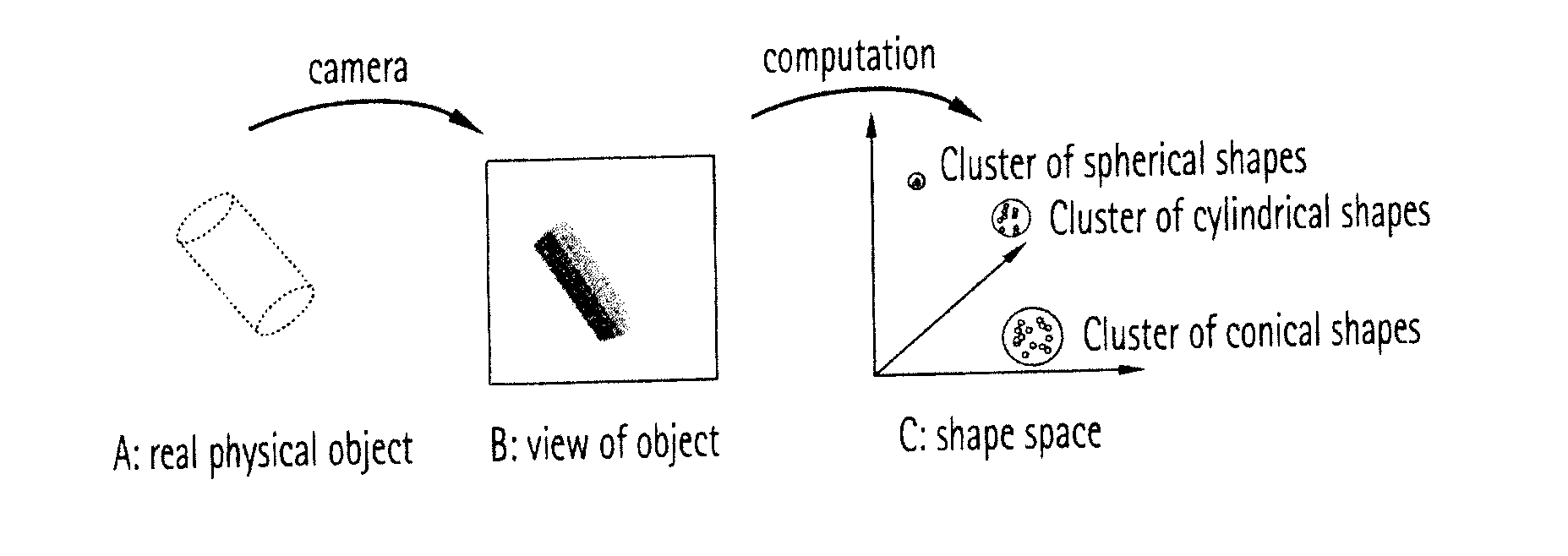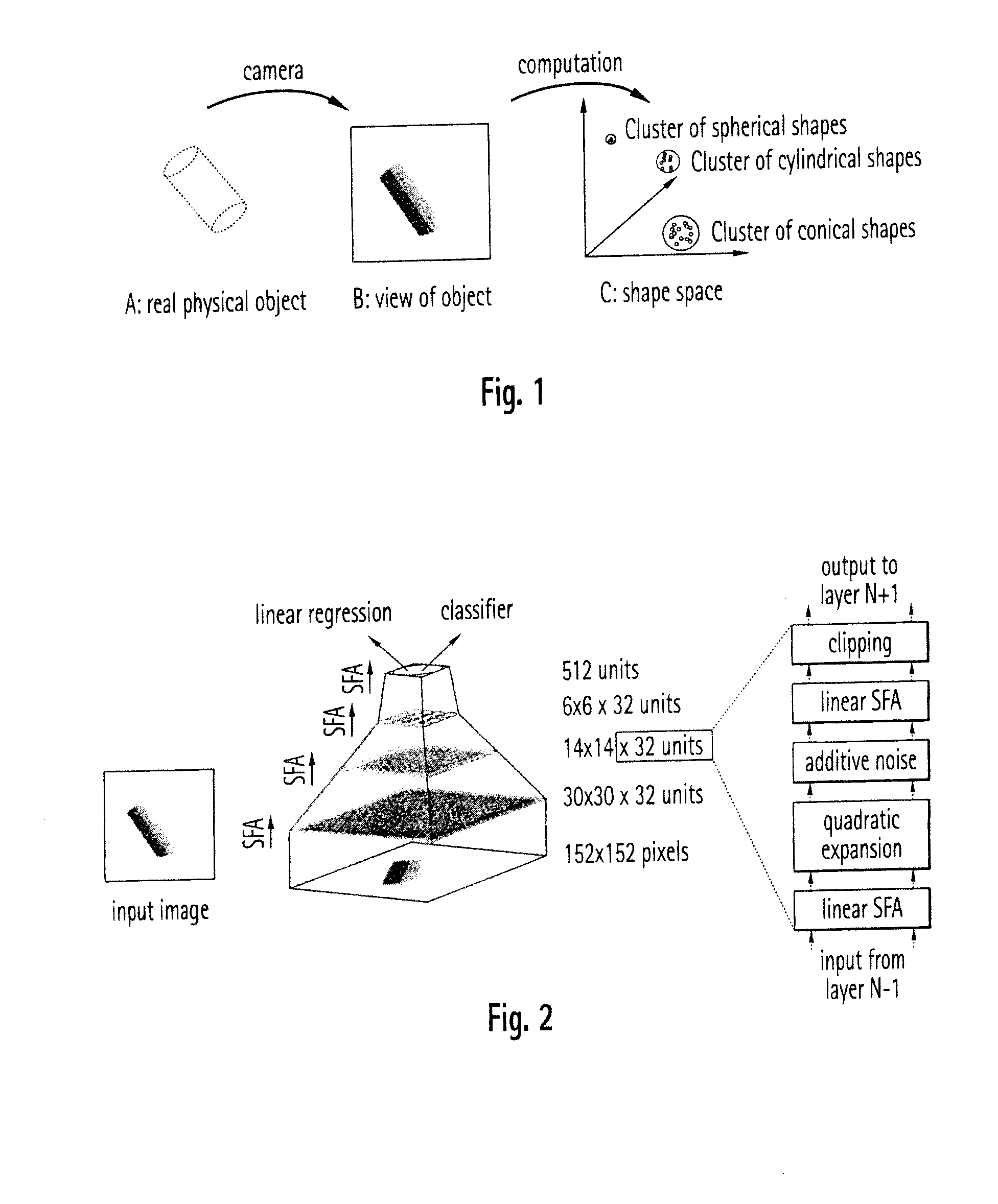Robot with vision-based 3D shape recognition
a 3d shape and robot technology, applied in the field of robots with vision-based 3d shape recognition, can solve the problems of no publications on the topic, no guarantee that such an approach would work, and the inability to reconstruct 3d shape from a single 2d imag
- Summary
- Abstract
- Description
- Claims
- Application Information
AI Technical Summary
Benefits of technology
Problems solved by technology
Method used
Image
Examples
Embodiment Construction
[0042]The invention presents a mechanism for extracting geometric shape properties of objects from 2d images and image sequences. Additionally, the system can use visual or non-visual information for implementing a more general similarity measure. This extraction process is based on two-dimensional views but the system is largely independent of the specific view of the three-dimensional object during its operation phase. In a first phase, the training phase, the system extracts the relevant image statistics from unlabeled image sequences. The training phase uses an established algorithm based on the “slowness objective” for finding features that typically vary slowly or seldom in the training data set, e.g., Slow Feature Analysis (WisSej 2002), the trace rule (Foeldiak 1991) or temporal stability (Kayser 2001). Additional constraints guarantee that multiple non-trivial solutions (like the constant solution) are computed. The proposed system can use a single or multiple steps of opti...
PUM
 Login to View More
Login to View More Abstract
Description
Claims
Application Information
 Login to View More
Login to View More - R&D
- Intellectual Property
- Life Sciences
- Materials
- Tech Scout
- Unparalleled Data Quality
- Higher Quality Content
- 60% Fewer Hallucinations
Browse by: Latest US Patents, China's latest patents, Technical Efficacy Thesaurus, Application Domain, Technology Topic, Popular Technical Reports.
© 2025 PatSnap. All rights reserved.Legal|Privacy policy|Modern Slavery Act Transparency Statement|Sitemap|About US| Contact US: help@patsnap.com


